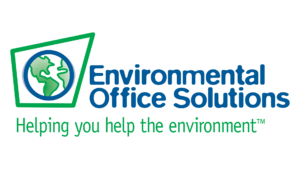California’s Sonoma County Waste Management Agency and its county residents share a long history of environmental engagement. Battery recycling is an integral part of their vision.
Located along the northern California coast, Sonoma County is a place of bucolic beauty with breath-taking beaches and acres of vineyards. With more than a half million residents, Sonoma is also a community with a long history of environmental engagement. The Sonoma County Waste Management Agency (SCWMA) and county residents share a vision of protecting the environment by diverting waste from the landfill. Battery recycling is an integral part of this vision.
Sonoma County can also be viewed as a microcosm of the greater California landscape when it comes to battery recycling.
Understanding Sonoma’s past is the first step to understanding how committed the county is to protecting its natural environment that attracts visitors from all over the world. In the last 3 ½ years, SCWMA has collected nearly 17,000 pounds (7,711 kg) of rechargeable batteries alone. The philosophy driving the county’s actions is simple:
- Divert as much as you can from the landfill, including batteries
- Make it easy and convenient for residents to recycle
“Our community really wants to do the right thing. We try to offer recycling opportunities that are easy and convenient. That’s the barrier. If it’s not easy or convenient, then our residents won’t recycle. The public is very appreciative of the options that are out there today,” said Lisa Steinman, waste management specialist, SCWMA.
A Changing Landscape
In 1992, Sonoma County and the nine incorporated cities formed the SCWMA to deal with waste diversion issues including educating residents and businesses to reuse and recycle solid waste and to properly dispose of household hazardous waste (HHW). In 2003, SCWMA began participating in the Call2Recycle program. But battery recycling really kicked into high gear in 2006 when California’s legislature passed the Rechargeable Battery Recycling Act, which required retailers that sold rechargeable batteries to collect them for recycling at their end of life. Up until that point, SCWMA had only one permanent public location where residents could drop off batteries for recycling. The Act quickly expanded the number of locations for rechargeable battery recycling.
The program broadened. In 2007, one Sonoma County municipality started a battery take-back program through an agreement with its waste hauler, which provided pick up, sorting and recycling of used batteries. More cities joined suit with their waste haulers. This started a chain reaction as local retailers announced their own collection programs as a community service. “We expanded the number of battery locations almost overnight. Businesses were voluntarily offering the battery take-back programs without compensation. SCWMA provided advertising and support,” said Steinman.
In 2011, the county’s battery recycling program hit a major bump in the road. The rise in the number of lithium batteries, which require taping or bagging to protect the terminals during shipping, had an immediate impact on retailers. Faced with rising handling costs, many businesses began dropping their collection programs. While a few retailers continued to pay the costs out of pocket, the scope of the program changed.
Bring All Your Batteries
The SCWMA has tried various ways to stimulate interest in recycling for both the single-use and rechargeable batteries. In addition to its permanent HHW collection site for residents and businesses, Sonoma County currently advertises 31 public locations that accept both types of batteries from residents. SCWMA employs three different residential recycling streams:
- Drop off at the Household Toxics Facility permanent site;
- Pick up from a weekly home pick up service (Toxic Rover);
- Drop off at a weekly community toxic collection site.
Single-use battery disposal is paid by either the SCWMA’s household hazardous waste program, a separate pilot program with retailers or city franchise agreements with the garbage haulers. Steinman is also expanding the collection program to include the county’s government departments and agencies. “We have a really big program. We receive lots of household batteries from all of SCWMA’s programs. Our message is just bring all of your household batteries for recycling,” said Steinman. “Plus, our weekly home pick up service is unique in the industry.”
Take Your Message to the Community
Steinman has found that public outreach programs are most effective at improving awareness. That’s why on many weekends you will find SCWMA staff and contractors at local farmers’ markets, schools, multi-family complexes and the county fair talking to residents about recycling. In 2014, SCWMA staff and contractors compiled 101 outreach days, with 26 events targeted at Spanish speakers. The SCWMA annual Recycling Guide and website provides in-depth information on all recycling programs, including batteries, while an Eco-Desk hotline provides answers to residents that call in.
“We don’t have a budget to advertise battery recycling specifically, so we place a heavy emphasis on community events. SCWMA staff and contractors go out into the community and talk with people,” said Steinman. Collections increased a hefty 10% from 2013 to 2014 and are on track to increase even more in 2015.
Steinman notes that the county is seeing a steady increase in the volume of batteries it is collecting. It’s a good trend, but also one that concerns her. “Either more people are recycling or there are more batteries being used. We want to keep them out of the landfill. At the same time, the costs and labor involved to manage batteries are getting overwhelming for the retailers and our HHW program. Can we continue to fund the growing disposal costs? We have an infrastructure in place to have a more robust take back program; it’s the disposal and labor costs that are the issue,” she added. “We are hopeful that there will be future legislation in California which will require producers of household batteries to develop, finance and implement a battery stewardship program for all household batteries.”
The only constant in the changing recycling landscape for SCWMA has been the Call2Recycle program. “During the past 12 years we’ve seen the program get easier and easier to use. The boxes can be used for both collections and shipment. For bulk collectors, the online shipping wizard makes the program super easy to participate in,” said Steinman. “We’ve been happy with our Call2Recycle partnership. We look forward to working with Call2Recycle for many years to come.”



